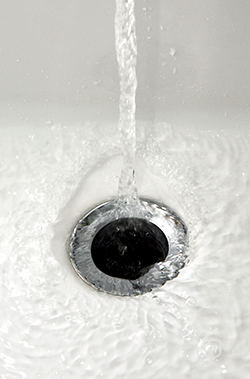 No doubt, water is a valuable resource. We use it every single day in a multitude of ways.
No doubt, water is a valuable resource. We use it every single day in a multitude of ways. When water supplies get tight, food production often comes under scrutiny. Why? Because water is a huge part of the food making process. We wrote an article a few months ago titled "Today you'll ingest 1,000 gallons of water." A study led by the California Rice Commission revealed it takes 1,326 gallons of water to grow the food an average American eats each day. In fact, nine out of 10 gallons of water used by Americans are connected to the consumption of food.
The sheer volume of water used for food may be concerning, but what is more problematic is the amount of water utilized to produce food that never gets consumed. Using data from USDA and the Water Footprint Network, Smithsonian.com attached water values to the amount of food wasted.
Take lettuce, for example. The average American wastes the equivalent of 7.7 heads of lettuce each year. It takes 91.8 gallons, or 1.8 bathtubs, of water to grow that amount of lettuce, which simply ended up in the trash. It takes even more water to grow tomatoes, and Americans throw out about 77 tomatoes annually. That is like wasting 498 gallons, or 10 bathtubs, of water every year.
The numbers are even more eye opening for animal-derived products that require more water to make. It takes 620 gallons of water to produce a dozen eggs; when the average American tosses 64 eggs a year, it's like pouring 5,260 gallons or 105 bathtubs of water down the drain.
When it comes to beef, about 11 pounds of the protein is wasted per person per year. That's the equivalent of 19,800 gallons, or 397 bathtubs, of water that never gets consumed.
Methods to save water during food production, or improved efficiency to get more food out of the water used, are certainly worth pursuing. Equally important, though, are efforts to reduce food waste. Some food spoilage and loss will be inevitable, but in 2010, close to 133 billion pounds of food ended up in U.S. landfills instead of consumers' mouths. By scaling back food losses, we can help make every drop of water used in food production count.

The author is an associate editor and covers animal health, dairy housing and equipment, and nutrient management. She grew up on a dairy farm near Plymouth, Wis., and previously served as a University of Wisconsin agricultural extension agent. She received a master's degree from North Carolina State University and a bachelor's from University of Wisconsin-Madison.









